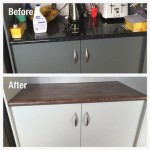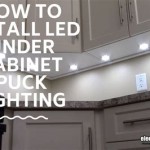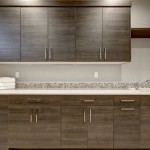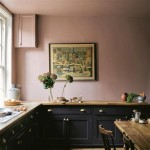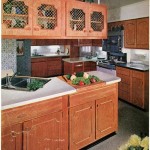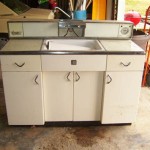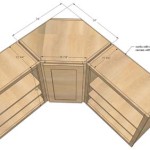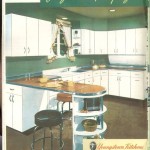Kitchen Cupboard Materials List: Understanding Your Options
The heart of any kitchen is often its cabinetry. These essential components not only provide storage for cookware, dishes, and groceries, but also define the kitchen's overall style and functionality. Selecting the right materials for your kitchen cupboards is a crucial step in the design process, impacting both the look and longevity of your space. This article delves into the diverse world of kitchen cupboard materials, exploring the advantages and considerations for each option.
1. Wood: The Classic Choice
Wood has long been the go-to material for kitchen cabinets, appreciated for its natural beauty, durability, and inherent warmth. Various wood species offer distinct characteristics, influencing both aesthetics and cost.
Popular Wood Options:
- Oak: Known for its strength, durability, and distinctive grain pattern, oak is a classic choice for kitchen cabinets. It can be stained or painted to suit various styles.
- Cherry: With a rich reddish hue and elegant grain, cherry wood imparts a luxurious feel to kitchens. It ages gracefully, developing a warm patina over time.
- Maple: Maple wood is renowned for its hardness and light, creamy color. It accepts stains well, allowing for a wide range of finishes.
- Alder: Alder wood is a softer option, offering a lighter color and a smooth, even grain. It is often stained to achieve a more dramatic look.
Advantages of Wood Cabinets:
- Natural Beauty: The inherent grain patterns and colors of wood provide a unique aesthetic appeal.
- Durability: Solid wood cabinets are built to last, providing a long-lasting investment.
- Customization: Wood can be easily stained, painted, or carved to achieve the desired look and feel.
- Sustainable: Choosing responsibly sourced wood contributes to environmental sustainability.
Disadvantages of Wood Cabinets:
- Cost: Solid wood cabinets are generally more expensive than other materials.
- Maintenance: Wood requires regular cleaning and care to prevent scratches, stains, and water damage.
- Susceptibility to Moisture: Wood can expand or contract due to humidity changes, requiring proper sealing and ventilation.
2. Laminate: A Budget-Friendly Alternative
Laminate offers a practical and affordable alternative to solid wood, combining durability with a wide range of design possibilities. Created by bonding a decorative paper layer to a core material, typically particleboard or MDF (medium-density fiberboard), laminate provides a smooth, easy-to-clean surface.
Advantages of Laminate Cabinets:
- Affordability: Laminate is a cost-effective option compared to wood.
- Durability: Laminate surfaces are resistant to scratches, stains, and moisture.
- Variety: Laminate is available in countless colors, patterns, and textures, mimicking the look of natural materials like wood, stone, or metal.
- Low Maintenance: Laminate surfaces are easy to clean and require minimal upkeep.
Disadvantages of Laminate Cabinets:
- Limited Customization: While offering a wide range of choices, laminate is not as customizable as wood.
- Less Durable Than Solid Wood: Laminate is not as dent-resistant as solid wood and can chip or scratch with heavy use.
- Potential for Warping: The core material of laminate cabinets can warp or swell if exposed to excessive moisture.
3. Thermofoil: A Durable and Versatile Choice
Thermofoil, also known as PVC (polyvinyl chloride) laminate, offers a durable and moisture-resistant alternative to traditional cabinet materials. It involves a thin PVC film applied to a substrate, typically MDF or particleboard, under high heat and pressure.
Advantages of Thermofoil Cabinets:
- Moisture Resistance: Thermofoil is highly impervious to water and humidity, making it an excellent choice for kitchens and bathrooms.
- Durability: The PVC film is resistant to scratches, stains, and fading.
- Easy Cleaning: Thermofoil surfaces are smooth and non-porous, making them effortless to clean.
- Wide Range of Styles: Thermofoil offers a variety of colors, finishes, and textures, including wood-grain patterns.
Disadvantages of Thermofoil Cabinets:
- Less Customizable: Thermofoil is not as customizable as wood, with a limited selection of colors and finishes.
- Potential for Peeling: While durable, the PVC film can peel or chip if not properly installed or exposed to extreme temperatures.
- Limited Repair Options: Repairs can be challenging, as the PVC film is not easily repairable.
Choosing the right cabinet materials depends on your individual needs, budget, and design preferences. Wood offers timeless beauty and durability, while laminate provides a budget-friendly option. Thermofoil combines moisture resistance with a variety of styles. By carefully considering the advantages and disadvantages of each material, you can select the best fit for your kitchen and ensure a beautiful, functional, and long-lasting space.

A Guide To Materials And Finishes For Kitchen Designcafe

Cutting List For Kitchen Cabinets Materials Sketchlist3d

A Helpful Guide On 7 Popular Kitchen Cabinet Materials And How Best To Use Them Cabinets Types Of
What S The Best Material For Kitchen Cabinets In Usa

7 Best Kitchen Cabinet Materials To Protect You From Poor Quality Horrors

Cutting List For Kitchen Cabinets Materials Sketchlist3d

Kitchen Cupboard Diffe Materials Their Pros Cons

A Helpful Guide On 7 Popular Kitchen Cabinet Materials And How Best To Use Them Cabinets
What S The Best Material For Kitchen Cabinets In Usa

9 Popular Kitchen Cabinet Materials In Malaysia
Related Posts

